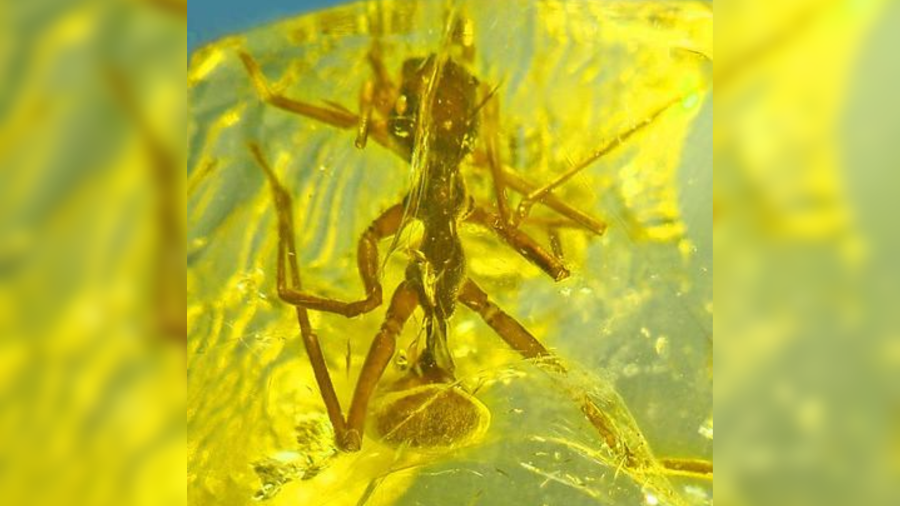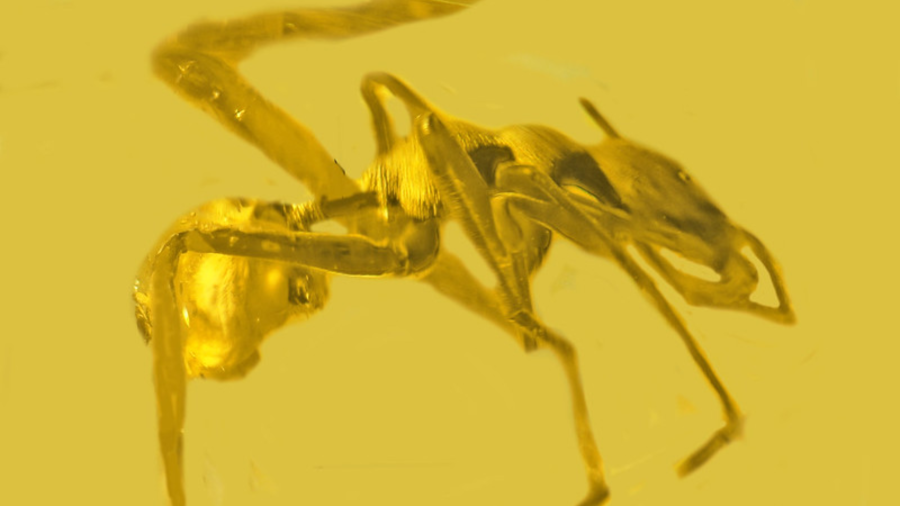Shapeshifting spider found in fossil by OSU researcher

PORTLAND, Ore. (KOIN) – An Oregon State University researcher found a new species of an ant-mimicking spider in a rare fossil from Colombia, the university announced Monday.
The specimen, which appears to be a jumping spider, was from Medellin, Colombia entombed in a resin called copal, which can be dated up to 3 million years old, officials said — noting the age of the fossil could not be determined without risking damage to the spider inside.
Masquerading spiders can be found around the world, and most have been undetected from fossil researchers until now, Oregon State University said.
Oregon State University researcher George Poinar Jr. found a new species of an ant-mimicking spider in a rare fossil from Colombia, the university announced March 25, 2024 (Courtesy Oregon State University.) Oregon State University researcher George Poinar Jr. found a new species of an ant-mimicking spider in a rare fossil from Colombia, the university announced March 25, 2024 (Courtesy Oregon State University.)
OSU Paleobiologist George Poinar Jr. — whose research was published in the journal Historical Biology — explained some spiders masquerade as ants in order to appear as less desirable prey.
“Ants are particularly good creatures for spiders to pretend to be – many animals find ants distasteful or dangerous to eat,” Poinar explained. “Ants are aggressive in their own defense – they have a strong bite as well as a stinging venom, and they can call in dozens of nestmates as allies. Spiders, meanwhile, have no chemical defenses and are loners, which makes them vulnerable to being hunted by larger spiders, wasps and birds – predators that would rather avoid ants. So if a spider can be like an ant, it’s more likely to be unbothered.”
To help them make their ant-like appearance, spiders usually position their two front legs to look like antennae and also mimic ant behaviors, Poinar explained.
“It is a challenge for spiders to accomplish this magical transformation to ants,” he said. “Ants have six legs and two long antennae, while spiders have eight legs and no antennae.”
Boeing CEO, others announce departure from company
“The abdomen and cephalothorax of spiders are closely attached, while in ants the equivalent of these body parts are separated by a narrow segment called the petiole,” Poinar continued. “And there are many other lesser structures that need to be modified in spiders for them to closely resemble ants. How is this accomplished? Most scientists say it begins with spider mutation, adaptation and then natural selection.”
“However, I think there is some spider reasoning and intelligence involved too since the spiders often model their body changes after specific ants in the same environment,” he said. “In the early days, we were told that all habits of insects were the result of instincts, but that is no longer the case.”
While the specimen in this case, named Mymarcachne colombiana, was from Colombia, Poinar said masquerading spiders live in many locations around the world — noting several groups of spiders have developed the ability to look and behave like different types of ants, and other insects such as flies, beetles, and wasps.
For the latest news, weather, sports, and streaming video, head to KOIN.com.



